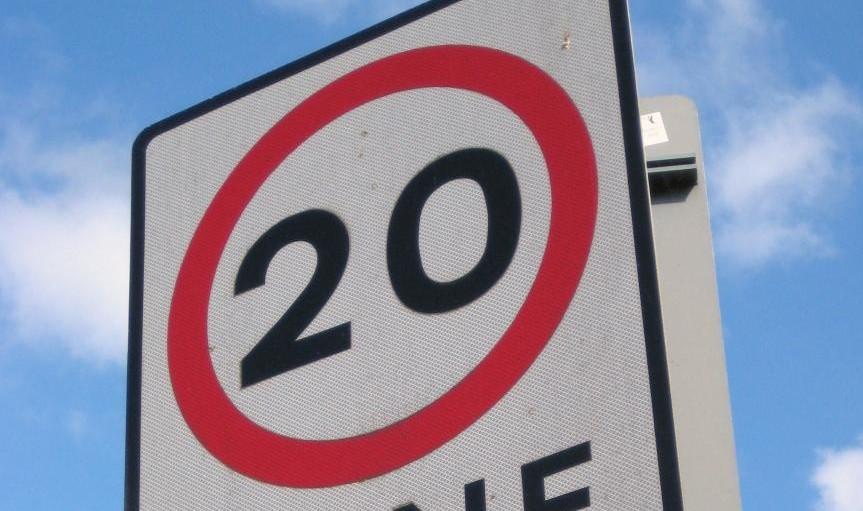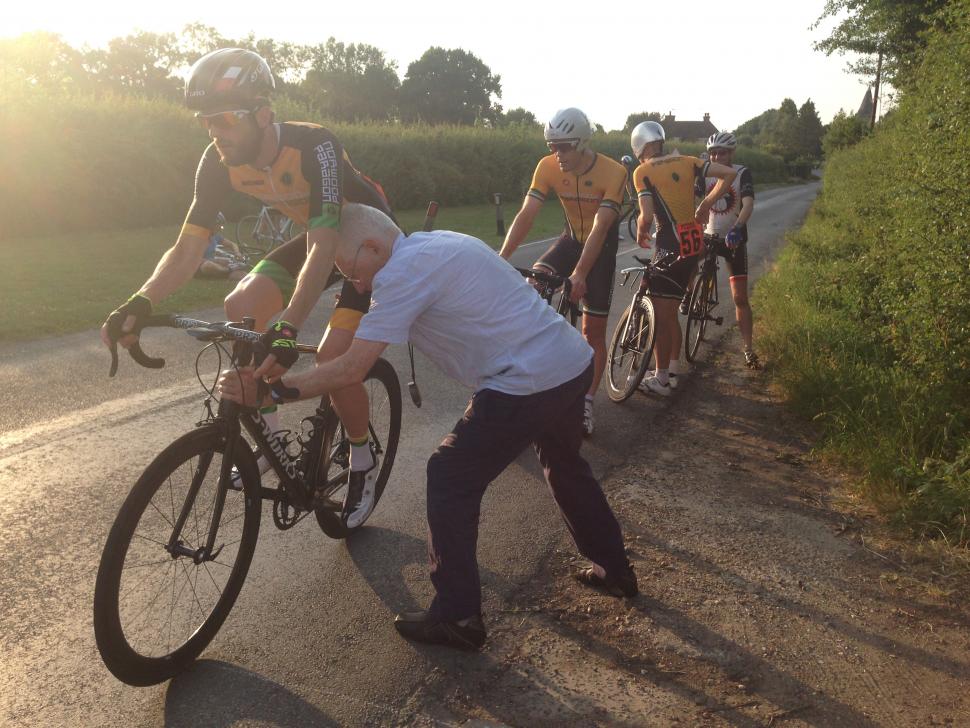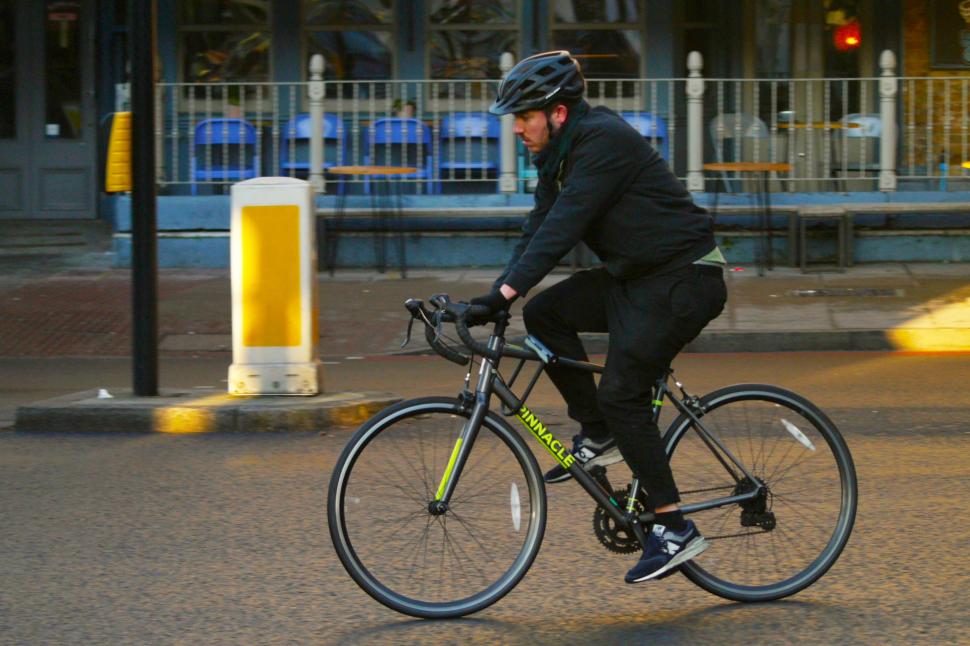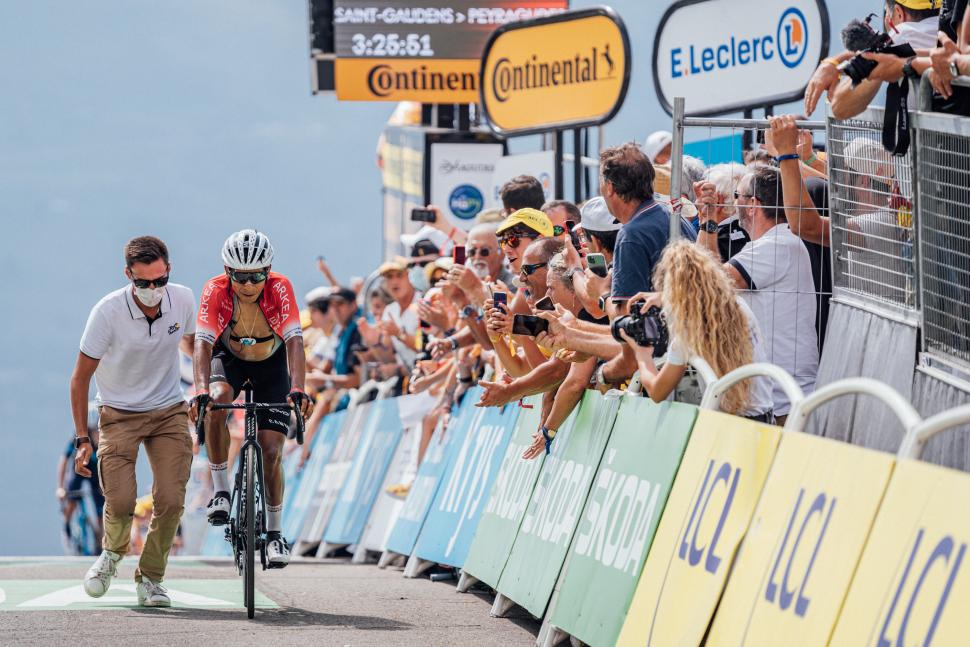- News
- Reviews
- Bikes
- Accessories
- Accessories - misc
- Computer mounts
- Bags
- Bar ends
- Bike bags & cases
- Bottle cages
- Bottles
- Cameras
- Car racks
- Child seats
- Computers
- Glasses
- GPS units
- Helmets
- Lights - front
- Lights - rear
- Lights - sets
- Locks
- Mirrors
- Mudguards
- Racks
- Pumps & CO2 inflators
- Puncture kits
- Reflectives
- Smart watches
- Stands and racks
- Trailers
- Clothing
- Components
- Bar tape & grips
- Bottom brackets
- Brake & gear cables
- Brake & STI levers
- Brake pads & spares
- Brakes
- Cassettes & freewheels
- Chains
- Chainsets & chainrings
- Derailleurs - front
- Derailleurs - rear
- Forks
- Gear levers & shifters
- Groupsets
- Handlebars & extensions
- Headsets
- Hubs
- Inner tubes
- Pedals
- Quick releases & skewers
- Saddles
- Seatposts
- Stems
- Wheels
- Tyres
- Health, fitness and nutrition
- Tools and workshop
- Miscellaneous
- Cross country mountain bikes
- Tubeless valves
- Buyers Guides
- Features
- Forum
- Recommends
- Podcast
news
“Can’t wait for speed limits at the next F1 race in Vegas”: Cyclists and motorists baffled by new “April Fools” 20mph time trial rules; Terrible anti-cycling barriers; Breaking (Away) Bad: Oscar Onley’s training/ painting gear + more on the live blog
SUMMARY
 20mph sign (CC licensed by EdinburghGreens via Flickr)
20mph sign (CC licensed by EdinburghGreens via Flickr)08 February 2024, 10:43

“Can’t wait for speed limits at the next F1 race in Vegas”: Cyclists and motorists baffled by new “April Fools” 20mph time trial rules
So, it appears that yesterday’s story on Cycling Time Trials’ reaction to the increasingly widespread implementation of 20mph speed limits in built-up areas – which includes forcing participants to slow to the required 20mph during those particular sections – has elicited quite the reaction online.
For those who missed it – CTT, the governing body for that classically British, self-loathing discipline of racing your bike solo against nothing but a clock, this week issued new guidance advising those taking part in its time trials to adhere to new 20mph speed limits, and any other rule of the road, following the default implementation of these reduced zones in Wales, as well as other parts of England, last year.
CTT’s guidance also stipulated that any course with a lengthy 20mph section should not be used if a viable alternative is available, due to concerns over safety for participants and other road users, along with the risk of causing “public outrage” which, CTT says, could put the future of time trialling in Britain in jeopardy.
And how did the internet react to this new safety-oriented, anti-“public outrage” measure? By checking the calendar, apparently.
April fool, it’s a bit early isn’t it? pic.twitter.com/tH5EBSZDHx
— Cyclegranny 🚴♀️ (@anneramsey740) February 7, 2024
“This is either a joke, or the world really has gone mad. Next, rugby players must wear bubble wrap onesies,” said Joe.
“This rubbish is contagious! Time to come to our senses!!” exclaimed Paul, representing the rather odd, sparsely populated central part of the Venn diagram of cyclists and those opposed to reduced speed limits.
“Emailed dropped into my inbox last night. I found the position hilarious. Granted it makes sense but just don’t run TTs on 20mph roads and all good,” said an amused cycling lawyer Rory McCarron.
Tell me this is a parody 🙄
— John Willis (@bugg3r_it) February 7, 2024
“Why? There is no speed limit for bicycles on Britain's roads,” Adabadang wrote on Twitter, summing up the general attitude of the non-TTing cyclist.
Pointing out the difficulty of enforcing these measures, Shit Cycling Shots wrote: “Marshalls with speed guns in every village? Good luck enforcing this one!”
Others noted the irony of forcing cyclists, during a race, to adhere to a speed limit apparently, ahem, often ignored by other road users.
“Maybe the weekend before the event they should do a speed check on cars in any 20 limit they pass through. Max speed for riders is the highest recorded by a car,” said Stuart.
“Tell drivers to stick to it then you have a deal,” agreed Sebastian, with Dan describing the measure as “kowtowing to the anti-cycling mob”.
“Can’t wait for speed limits at the next F1 race in Vegas,” wrote the Entitled Cyclist, while Eamonn said: “Schrodinger’s Cyclist. Going too fast while simultaneously going too slow and delaying the all-important drivers.”
On the more extreme end of the reaction spectrum, one Facebook user, Shaun, however, reckons time trialling shouldn’t even take place on a road, never mind a 20mph section.
“If you want to TT, get a road closure or do it on a track. Sport shouldn't take place on the public highway. I'm a cyclist by the way,” says ‘cyclist’ Shaun.
Some, meanwhile, used the guidance to pitch their own, groundbreaking vision for the future of time trialling in the UK.
“They should do the whole route on 20mph roads and disqualify anyone who is even a tiny bit over 20mph average,” said cat-owning cyclist Travis (and Sigrid, I suppose), while Phil described the new world of time trialling as an “acceleration test”.
“Or a time trial in the truest sense of the term. Getting from A to B as close to an allotted time as possible,” said Farrell.
Now, that is a time trial I could get behind…
08 February 2024, 16:29
Cyclocross season extends into Tour of Antalya?
The heart wants what it wants, and apparently it wants more cyclocross...
My favourite moment of the day. 🏃 #TourofAntalya #Cyclocross pic.twitter.com/3v0LUtHgs9
— Mihai Simion (@faustocoppi60) February 8, 2024
08 February 2024, 15:12
“Chronic underfunding” of active travel makes England the “poor relation” compared to Scotland and Wales, says Cycling UK
Cycling UK insists that “chronic underfunding” of active travel has made England the “poor relation” when compared to Scotland and Wales, both of which benefit from much greater investment per capita in cycling and walking.
As a result, people living in England are being denied health opportunities and an improved environment where they live, says the charity, which has backed a report published this week by the Institute for Public Policy Research (IPPR) entitled ‘Stride and Ride: England's path from laggard to leader in walking, wheeling and cycling’.
Read more: > “Chronic underfunding” of active travel makes England the “poor relation” compared to Scotland and Wales, says Cycling UK
08 February 2024, 15:04

Cycling, spawning doping stories like it’s 1999, or 2009, or…: Former Jumbo-Visma and Lidl-Trek Antwan Tolhoek pops steroid positive, as Nairo Quintana’s old doctor faces criminal charges for ‘possession of a prohibited substance or method’
Blimey, it’s been quite the week for cycling fans nostalgic for the constantly breaking doping stories of the 1990s and 2000s.
After Decathlon AG2R La Mondiale rider Franck Bonnamour’s dodgy blood profile raised some red flags earlier this week in the UCI’s biological passport department (waking it from its roughly decade-long slumber), it’s now the turn of spindly Dutch climber Antwan Tolhoek to be slapped with a provisional suspension, this time for testing positive for anabolic androgenic steroids ( how very old school).
The 29-year-old, who emerged as a promising climber for Jumbo-Visma in the late 2010s before moving to Lidl-Trek in 2022, returned the out-of-competition positive on 27 November 2023, just weeks before joining Portuguese Continental side Sabgal-Anicolor for the 2024 season.
Tolhoek has had previous with anti-doping infractions – in 2017 he was previously briefly suspended by the then-Lotto-NL Jumbo team after being found in possession of sleeping pills, contravening the Dutch squad’s internal policies.
The Dutch rider’s provisional suspension was announced by the UCI on the same day it was revealed that Nairo Quintana’s former doctor is set to go on trial in France later this year for alleged criminal doping offences following an investigation which saw the Colombian’s hotel room raided during the Tour de France.
Fredy Alexander Gonzales Torres, who was Nairo and Dayer Quintana’s doctor at Arkéa-Samsic when their hotel room was raided by police during the 2020 Tour, is facing charges of “possession of a prohibited substance or method for use by an athlete without medical justification”, and will stand trial on 2 September in Marseille.
According to Le Télégramme, injection equipment, saline bags, and a tourniquet were found during the raid, though it is believed that Quintana – who recently rejoined Movistar for 2024 after a year in the wilderness following a 2022 tramadol positive – will not face any criminal charges.
Meanwhile, another longstanding doping investigation, Operation Ilex – focused on the activities of Quintana’s compatriot Miguel Ángel López – has faced calls from a public prosecutor to be partly shelved, despite a recent report related to the investigation claiming that many cyclists are still trying to game the anti-doping system.
What year is this? 2006?
08 February 2024, 15:07
Ah, the bleak dystopian future is already here
08 February 2024, 14:18
Team Jayco-AlUla's rider hit by a car driver during training ride in France
Jayco-AlUla's 23-year-old recently-turned Australian pro Rudy Porter has been hit by a driver while out for a training ride along the south-eastern coast of France.
08 February 2024, 13:00
Hammersmith Bridge to reopen to bike riders with two-way cycle lane – but only for 10 weeks
Hammersmith Bridge, which cyclists currently have to push their bikes across, is to get a two-way cycle lane from next Tuesday 13 February – although it will only be open for 10 weeks. And unlikely as it sounds, the temporary installation of the active travel infrastructure is in part thanks to the decision of a group of West Ham United fans to travel to an away match at Fulham’s Craven Cottage ground before Christmas by boat.
Hammersmith & Fulham (H&F) council says that “significant damage” caused to a gantry running along the underside of the bridge when the boat became wedged underneath it means that ongoing stabilisation work to the historic structure has been temporarily halted.
The local authority is taking advantage of the pause in works to put in place a two-way, three-metre-wide cycle lane in the centre of the bridge’s carriageway which it says will “allow greater access to residents, visitors and businesses on both sides of the river,” and which is “likely to remain open for around 10 weeks.”
> Read more: Hammersmith Bridge to reopen to bike riders with two-way cycle lane – but only for 10 weeks
08 February 2024, 12:41
“All they do is obstruct”: Cyclists perplexed by pesky cycling gates, allegedly installed by a private land owner
While we discuss the latest episodes of Strictly Come Dancing and University Challenge at the road.cc editorial day (I know, pressing cycling issues right?), here's some pesky cycling barriers from Thames Path.
These barriers, like the ones that appeared further up the Thames Path, are a sledgehammer to crack a nut. They are bad for disabled people, those with buggies, walkers, joggers, cyclists and tourists. Such hostile and unnecessary obstacles should be removed https://t.co/URsmRH114F
— Greenwich Cyclists (@GreenwichCycle) February 8, 2024
Cycling barriers are pieces of infrastructure that have been widely criticised for their lack of inclusivity by putting people using bikes dedicated for disabled users, or those travelling with cargo bikes or with their children, other than the maybe-obvious anti-cycling aspect of it.
Most recently, we encountered this “Kerplunk-style” barriers on cycle path in Salford which left people wondering if it was actually designed for "ferret slalom racing".
This recent one, interestingly, has been installed by a private landlord, claims cyclist Calum O'Byrne Mulligan. "I’m urgently seeking their removal on accessibility grounds and as they are an unnecessary and unhelpful obstruction of the public footpath," he added.
A resident from Blackheath Standrard replied under the post: "I assume a private developer would need permission to obstruct the Thames pathway, which wouldn’t be granted? That’s such a busy part of the river frontage, crazy idea."
Greenwich Cyclists group quote tweeted the original post saying: "These barriers, like the ones that appeared further up the Thames Path, are a sledgehammer to crack a nut. They are bad for disabled people, those with buggies, walkers, joggers, cyclists and tourists. Such hostile and unnecessary obstacles should be removed."
08 February 2024, 11:19
New “car-free” Brompton factory facing delays as traffic authority calls on bike brand to consider those with “no choice but to drive”
Folding bike brand Brompton’s plans for an ambitious new eco-friendly factory and headquarters in Kent are facing further delays after the highways authority raised concerns about the scheme’s impact on the local road network and the lack of any car parking facilities at the site.
Under the travel plan drawn up for the site, no new parking spaces will be also created. Staff and visitors will instead be encouraged to cycle, walk, or use public transport to reach the factory, which will also have a visitors’ centre, museum, and café.
However, the active travel-centred nature of the £100m scheme now appears to have been the catalyst for a series of delays to the project.
08 February 2024, 10:53
Breaking (Away) Bad
When you’ve got an interval session in the morning and a two-bed semi to do in magnolia in the afternoon:
For those wondering what the heat training part looks like… 🥵🥵 https://t.co/BIRRKAmeyK pic.twitter.com/8iv6GOxjTa
— Oscar Onley (@OscarOnley) February 8, 2024
And maybe a crystal meth deal in the evening…
08 February 2024, 14:31
Live Blog Disruption Update
If you’re wondering why today’s live blog coverage is somewhat on the lighter side, it’s road.cc’s annual editorial day – which, for the uninitiated, means all of us from road.cc, off-road.cc, ebiketips, and beyond meet up in a room above a pub, drink lots of tea, and stare intently at PowerPoint presentations for a few hours.
So, if you’re waiting impatiently for the latest live blog story, don’t blame Ryan and Adwitiya, they’re both very busy. Blame Dan instead…
After obtaining a PhD, lecturing, and hosting a history podcast at Queen’s University Belfast, Ryan joined road.cc in December 2021 and since then has kept the site’s readers and listeners informed and enthralled (well at least occasionally) on news, the live blog, and the road.cc Podcast. After boarding a wrong bus at the world championships and ruining a good pair of jeans at the cyclocross, he now serves as road.cc’s senior news writer. Before his foray into cycling journalism, he wallowed in the equally pitiless world of academia, where he wrote a book about Victorian politics and droned on about cycling and bikes to classes of bored students (while taking every chance he could get to talk about cycling in print or on the radio). He can be found riding his bike very slowly around the narrow, scenic country lanes of Co. Down.
Latest Comments
- Matt Page 36 sec ago
It might well be called the British Gravel Championships, but it is not and never has been sanctioned by British Cycling, or by any other governing...
- Type1Roadie 21 min 59 sec ago
I hope they start resurfacing the roads soon so that they don't need to start the stages on gravel bikes 🤷🏻♂️
- mdavidford 29 min 12 sec ago
Literally, when you end up skating along the ground on it.
- bobbinogs 48 min 30 sec ago
I think you could easily argue that 90% of vehicles on the road are unnecessarily sized and add a considerable risk of injury (to others) in the...
- headingley 1 hour 32 min ago
Cameras (front & rear) are the only way to (try and) sort this kind of behaviour. I've run front and rear camers on my commute for several...
- SimoninSpalding 1 hour 46 min ago
I have Cors N:ext on my summer bike, mainly because they do a 24mm, 25 is REALLY tight on rear brake clearance. I am not impressed with how the...
- Tom_77 2 hours 42 min ago
Typically you will signs like this one.
- chrisonabike 2 hours 48 min ago
However, the highway code revisions now provide more detail and the cyclist overtaking picture has been updated. e.g.:...
- eburtthebike 3 hours 35 min ago
And they were right. It says something about our society that people are prepared to put so much money and effort into opposing something as...
- stonojnr 4 hours 39 min ago
Could make a crass joke about how youre only supposed to flip pancakes today, but i wont...






Add new comment
47 comments
I was puzzled by the 20 mph thing until I realised the TTs referred to were held on the open road with no traffic restrictions, then it made a bit more sense.
Planning a race route through a reduced speed zone without closing the road for the race doesn't seem like the best idea, at the very least the optics are bad since the participants should fairly easily be able to exceed the posted limit.
I'm guessing the events are likely mostly volunteer run and under funded so the extra people or timing equipment needed to set up timing checkpoints on either side of any 20 zone would be prohibitive.
I wonder if Strava or simply GPS data couldn't be used to calculate the cumulative time across all the >20 zones and determine a winner?
Some of the MTB races I've done have used Strava times to determine best times up major climbs or down descents and give additional prizes for those riders in addition to the overall winners.
I realise there are issues with the accuracy of Strava times but these are amateur events so accuracy to the split second isn't the most important thing.
It's a time trial, almost all of them are on public roads. There's zero chance of closing them for a cycling TT. And having part/parts of a TT course nullified through a 20mph zone is simply not going to work.
It's not just split-seconds. So you're saying it's fine if our times are inaccurate because we don't get paid to race? How is that going to encourage participation? Chip timing is the best solution (where practical), though it's not cheap and won't work on public roads.
As someone said elsewhere, perhaps a move away from fixed distances (10, 25, 50 miles etc) is the way forward.
The majority of people baffled by the 20mph thing are those that have no idea how fast this lot ride. You can't declare 20 zones are for accident reduction and then have xenomorphs flying through them at 35mph barely looking where they are going.
Jayco-AlUla's 23-year-old recently-turned Australian pro Rudy Porter
Wishing him a speedy recovery and hoping he's not too sore 🙏
I'm a little curious though, I didn't know you could "turn Australian" (naturalise sure) I'm presuming he recently turned professional!
Side effect of vegemite sandwich doping?
Regarding those bike barriers: here in the U.S., you can get a cordless angle grinder for $30 at Harbor Freight. Just sayin'.
Unlike the ULEZ cameras the vigilanted are cutting down in a similar fashion, those barriers are designed to withstand harsh impact a bit better than a lamppost. Cutting them might prove a lot more difficult, and because they are more popular amongst the anti-cycling lobby than ULEZ, they'll blab harder if they see anything.
going to look for any TTs that incorporate 20mph limits so I can cruise past all the aero machine onesie wearers on my regular bike.
I'd had that thought. Could we get them excluded for drafting d'you think?
I see the 20mph rule as a common sense compromise given that last year there was talk of banning tts that went through 20mph limits. Admittedly if a large part of the course is 20mph then it's not workable but I imagine that there are many which pass through a village which will become a neutralised zone allowing the rest of the course to be used. It's increasingly difficult to find suitable routes so if this allows some to continue then it's a good thing. I can imagine the response from the frothing masses if the CTT suggested ignoring 20mph limits...
The TT thing is so straight forward I fail to see why people here don't get it. A cyclist can be prosecuted for unsafe riding and many people would consider exceeding a speed limit un safe. Those who are some what anti towards cycling would love to stop the events. Why give them excuses? Legal and liability reasons are bound to suggest that anyone exceeding limits, even if they don't apply, are to blame for an incident. If a respondant isn't familiar with TT rules as some replies suggest then they do not need to reply. Nowt but opinon only. It will affect Welsh TTs , my own club wil lose both it's best evening 10 course and its money spinning open 25. Thats life.
I hear this fuss about TT races and speed limits, but I am a bit confused. Are these TT races on open to motor traffic and pedestrians roads or to closed like the finishes I see on Tour de France, where even pedestrians are behind restricted access tape?
They are open roads. There is live traffic at the point of racing.
There is nowhere near the budget to be able to close roads off for this event, you would be looking at well into £bn territory because there are literally thousands of events every year.
The courses that we use, however are carefully chosen and inspected to ensure that they are as safe as possible for competitors, and without disruption. For instance, courses must not go through traffic lights, and will only take left turns at junctions (excluding roundabouts). Courses on Dual Carriageways are carefully monitored to ensure that traffic levels are reasonable, and that the course doesn't leave riders vulnerable to merging traffic with blind spots. Courses must be approved by the CTT (Cycling Time Trials - the Governing body responsible for TT racing in the UK) and will be given an allocated code for approval.
Thanks for the clarification, I thought they would have restricted access as they do in pro races and big marathons.
To be honest, any kind of race in roads open to motor traffic seem like a Cannonball race to me. I believe the speed limit is a thing to worry but not the most important one, as there will be victory-hungry guys willing to risk anything.
no need because there is no bunch, there is no jockeying for position, just a load of riders well spread out, each going as fast as they can at speed which (until now) are below the speed limit anyway.
For Time Trials usually at small club events there are normally 10 to 20 riders (but often space for up to 40), and on the bigger "Open" events (which accumulate league points for riders for qualification to regional and National championships) there are up to 100.
But riders start off at 1 minute intervals and rarely come together on course. Faster riders will always overtake slower riders who set off before them but there's no big risk.
Marshalls will be stationed at key risk areas, turns etc in case of incident, any rider running foul of Road Laws are DQ'd.
The Road Racing leagues, however, are bunch events. They are usually circuits that are made up of rural roads, and require British Cycling Commissaires to be present. The race will always have a Commissaire car at around 1/2 mile in front of the race to ensure safety, whilst marshals will keep an eye out for dangerous riding. You also can't ride road races without obtaining your Cat 4 licence - You can't enter on a Provisional race licence, unlike closed-circuit races such as Circuit Crit series, Cyclocross or MTB.
For both RR and TT safety briefings are given to competitors where necessary.
If you go cannonball and break rules, you will probably be caught.
Quieter rural courses also don't see heavy traffic. You might see 10 to 20 cars in both directions over a 10 mile event. Dual carriageways are used at times when two lanes of traffic are unlikely to occur - these are mostly used on weekend mornings.
Yes, it's a peculiarly British thing that arose because mass start racing on open public roads was banned in the UK in 1890, so in 1895 someone (name escapes me) came up with the idea of time trials instead, and they have remained our primary way of racing ever since.
I believe it was all racing on roads that was banned, not just mass start and it was mandated that clubs organised races in velodromes. The point of the single rider against the clock was that if they were spotted, they were simply somebody on a bike (no skinsuits, no P5X or Shivs back then). This is also why the courses have codes assigned to them, so if somebody found a secret entry list, they wouldn't know where the race was being held.
On the topic of open traffic, my local 10 mile TT event (P451/10) is held weekly during the season on Tuesday nights, it's all on NSL A road, around a third of that is dualled, the people I know who do it regularly have said that the vehicles going past at 60-70mph creates an advantageous drafting effect, it's known as a fast course.
Yes you're right, I'd forgotten all races were banned. Bizarrely it was not the law that banned racing but the National Cyclists Union, who feared that all cycling would be banned if racing continued. The police were so hostile to racing that mounted officers would charge riders and try to throw sticks in their spokes. It's interesting to note, in the context of today's hiviz debates, that the standard TT uniform was black sweater and black tights in the hope that racers would be harder for the police to spot.
Wait until he hears about the Isle of Man TT...
Don't they close the roads for the IoM TT? Pretty sure I've not seen any motorbikes weaving their way through traffic at 150mph.
Seen any cyclists doing that recently? The national teams would love to hear.
Doesn't matter - "Shaun" said 'on the public highway' with no reference to whether said public highway was at that time closed to the public.
Seems obvious that the reference to road closures was there in Shaun's preceding sentence.
Actually if you read shaun's quote...
“If you want to TT, get a road closure or do it on a track. Sport shouldn't take place on the public highway. I'm a cyclist by the way,” says ‘cyclist’ Shaun.
TTs were about before cars Shaun
Tourist trophy, not time trial.
The nearest motorsport equivalent to this stuff is when the WRC turn up in Wales for Rally GB. Competitors drive on open roads in full factory spec rally cars between stages and servicing.
They're fully expected to keep to all applicable road traffic laws, including speed limits, and the police prosecute those that don't.
Still sport though.
Watch out for the service barges though. They are not brightly coloured, do not carry numbers and have to cover greater road distances in less time than the competing cars.
There's also the Circuit of Ireland which is raced over a number of stages both paved and forest tracks. When it was a longer event many years ago the drivers were timed travelling between stages and if they were faster than the official average time they were penalised. There would also have been random stewards at junctions to observe light jumping.
Pages